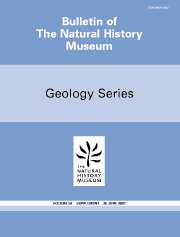No CrossRef data available.
Article contents
Gough's Cave 1 (Somerset, England): an Assessment of the Sex and Age at Death
Published online by Cambridge University Press: 26 May 2004
Abstract
The overall impression of the sexually dimorphic characteristics of Gough's Cave 1 is that the remains are those of a male. However, the specimen does present some ‘female’ features in the facial skeleton, the ischiopubic rami and pelvic apertures, combined with relatively small overall size, and an ambiguous greater sciatic notch morphology. Nevertheless, the various features employed for sexual diagnosis of Gough's Cave are predominantly those which indicate or strongly suggest that it is male, but this must be accompanied with the caveat that either this individual falls at the feminine end of the male range of variation or that the patterns of skeletal sexual dimorphism of the population from which it derived were modestly different from those of the mostly European and European-derived reference samples used for this assessment. In contrast to the ambiguities of sex determination for Gough's Cave 1, the various indicators of his age-at-death are highly consistent. All of them agree in placing Gough's Cave 1 between his late second decade and middle third decade. He was unlikely to have been younger than about 18 years, and most likely was not older than about 23 years at death.
- Type
- Research Article
- Information
- Bulletin of the Natural History Museum: Geology Series , Volume 58 , Issue S1 , 26 June 2003 , pp. 45 - 50
- Copyright
- © Natural History Museum, 2003




